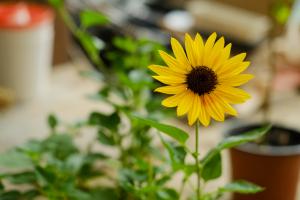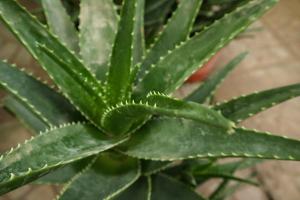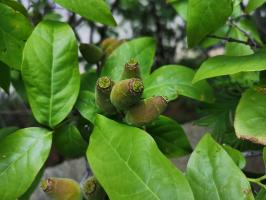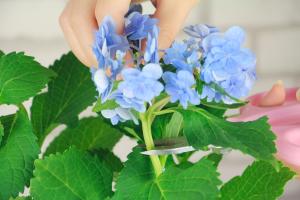The bottom of the basin is padded with towel gourd pulp, which will never rot again
1. Pick the aging loofah pulp at home, take out the seeds and cut them into small segments of 3-5cm
2. When giving the flower pot at home, directly pad the loofah pulp at the bottom of the pot, which is permeable and breathable, and will no longer let the flowers rot. moreover, the loofah pulp will rot in the soil continuously, so as to supplement nutrients for the flowers. It's killing two birds with one stone

Brush the bowl cloth and pad the bottom of the basin so that the flowers will never rot again
1. The main component of the dish cloth is sponge. When changing the basin, put it directly on the bottom of the basin, and then add nutrient soil to fill the flowerpot
2. When watering the flowerpot, the sponge at the bottom of the basin can absorb the excess water, so that the flowers at home will never rot again

The bottom of the basin is padded with a gourd slice, which will not rot for 10 years
1. If you have a mature gourd at home, you can dig out the seeds in the gourd and smash the rest into small pieces
2. Put the broken gourd on the bottom of the flowerpot, and then fill the soil to plant flowers directly! Gourd fragments are padded at the bottom of the flowerpot, with large pores, which can effectively achieve the purpose of water and air permeability, so as to prevent flower rotten roots at home

The basin bottom is padded with stones, which is loose and breathable
1. Stones picked up by the river or construction sites can also be used to pad the bottom of the basin. Soak the stones in clean water for about 3 days, wash the dirt off the stones, and then take them out and dry them in the sun
2. When changing the basin, directly put the dried stones on the bottom of the basin and lay a thin layer on the ground. Don't put too much, otherwise it will be heavy when moving the flowerpot in the future. The stone is permeable and breathable. It can prevent rotten roots by placing it on the bottom of the basin

The bottom of the basin is padded with cypress shell. It's hard to rot roots
1. When you go to the park or play in the wild, remember to pick up some cypress shells under cypress trees. Remember to choose the dry and cracked ones on the ground. It's better if they have been humified and blackened
2. After picking up the cypress shell home, dry it in the sun for 2-3 days, or heat it directly in the microwave oven for 3-5 minutes. After thorough sterilization and disinfection, it can be directly padded on the bottom of the basin

The basin bottom is padded with rotten wood, which is permeable and breathable
1. When walking in the wild, you can pay a little attention. If there is that kind of rotten wood, pick it up and go home! Boil in boiling water for 5 minutes, or soak in potassium permanganate for half an hour, sterilize and dry for standby
2. Rotten wood can be crushed when kneaded. It can be directly padded at the bottom of the basin. This is a good thing for raising Dendrobium. It can also be crushed and mixed in the soil. The effect is very good

Put some fruit shells on the bottom of the basin, and the flowers at home will never rot again
1. Don't throw away the fruit shells you eat at home. Just collect them and pad the bottom of the basin. For example, peanut shell, litchi shell and soya bean shell can be used, but there must be no salt. Like soya bean shells, it's best to boil them with water and dry them before using them
2. Directly putting the fruit shell on the bottom of the basin can also achieve the purpose of water and air permeability, and the flowers at home will never rot again

Put some pinecones on the bottom of the basin, and the flowers at home will never rot again
1. If you take advantage of the weekend to play in the mountains, you can pick up some fallen pinecones under the pine tree and soak them in carbendazim for a few days after taking them home for sterilization
2. Wash and dry the pinecones and lay a layer directly on the bottom of the flowerpot. If the pinecone particles are relatively large, the pores are relatively large, so the purpose of water permeability and air permeability can be achieved

Put some bricks on the bottom of the basin. The longer the flowers, the more prosperous they will be
1. When passing through the construction site, if you see bricks, you can directly pick them up and break them with a small hammer and soak them in clean water for about 1 day to remove the alkalinity in the bricks and prevent root burning
2. Take out the bricks and expose them to the sun for sterilization and disinfection. After drying, it can be directly padded at the bottom of the flowerpot. A brick about the size of your thumb is padded on the bottom of the basin, which can just achieve the purpose of water and air permeability, so that the flowers will never rot again

Put some cinders on the bottom of the basin. The longer the flowers, the more prosperous they will be
1. The effect is similar to that of bricks. There is also cinder. It's a pity that coal burning is not allowed in the countryside now, and it's difficult to get cinders. The cinders picked up at home are broken into thumb sized pieces, soaked in water and dried in the sun
2. Use a sieve to screen out large pieces of cinders and put them directly on the bottom of the basin. The water permeability is very good

The bottom of the basin is padded with gauze mesh or screen window, and there will be no soil leakage
1. There are replaced screen windows or gauze nets at home, which can be cut a few times and used as a cushion at the bottom of the basin
2. When changing pots for flowers, the gap at the bottom of the pot always leaks soil. Adding a layer of fine mesh can effectively avoid this problem

The basin bottom is padded with non-woven fabric or wet paper towel, which is permeable and breathable without soil leakage
1. When you buy shoes at home, you'd better collect the non-woven fabric wrapped in shoes, cut it into small pieces and put it directly on the bottom of the basin, or put a clean wet paper towel on the bottom of the basin
2. The non-woven fabric or wet paper towel padded on the bottom of the basin has good water permeability. It won't break when pulled by hand. It can also prevent soil leakage. It is very suitable for padded on the bottom of the basin


 how many times do yo...
how many times do yo... how many planted tre...
how many planted tre... how many pine trees ...
how many pine trees ... how many pecan trees...
how many pecan trees... how many plants comp...
how many plants comp... how many plants can ...
how many plants can ... how many plants and ...
how many plants and ... how many pepper plan...
how many pepper plan...
































